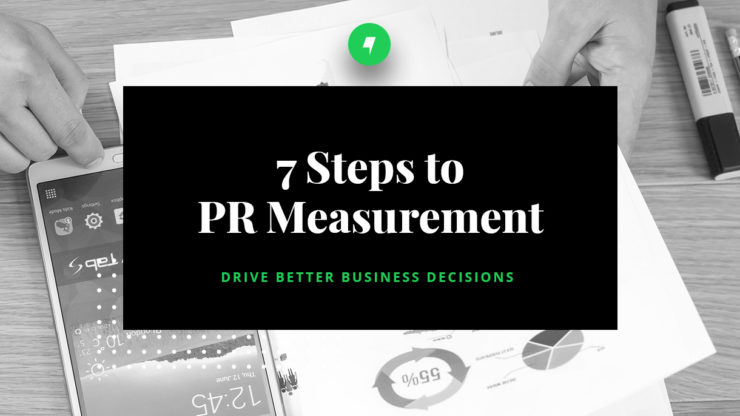PR measurement has historically been an embarrassment. From ad equivalencies to mention counts and “readership,” the industry has long struggled with how to measure success. Significant improvements in PR measurement have been made over the last decades, and it’s now an expected output from agencies.
Not only can agencies offer robust measurement reporting and ROI, but they should be.
Why Measure PR?
Historically, PR has been a bit behind the ball when it comes to showcasing how effective a campaign can be. Because PR campaigns generally aren’t as straightforward as an advertising campaign, for example, it takes a little more work to measure effectiveness. However, the C-suite has come to expect actual results of campaigns that tie directly into organizational objectives.
Although that alone is reason to measure, PR measurement should happen for three additional reasons:
1. Measurement gives a PR campaign focus
2. Measurement provides credibility
3. Measurement gives accountability
Seven Steps of Measurement
There are seven basic steps when it comes to measuring the success of a PR campaign. While these steps have been around for a while, they continue to evolve just as the industry does. The steps include:
1. Research
Effective research provides an assessment of public opinions and preferences and can also help predict behavioral outcomes. Taking time to conduct research upfront makes it much easier to demonstrate the efficacy of the program down the line.
2. Identify Target Audiences
Basically, who influences the success of your business? The research done pre-campaign should help to define who the target audiences should be. You should not only know who they are, but also what they’re looking for.
3. Set the Campaign Objectives
These objectives should be SMART, that is:
» Specific
» Measurable
» Attainable
» Relevant (or Realistic)
» Time-bound
Keep in mind that there can be business objectives, PR objectives, and campaign-specific objectives. Be sure you’re clear about what objectives you’re setting. And most importantly, make sure everyone agrees on these objectives, including key executives.
4. Define Measurement Criteria
Basically, what are you measuring? Opinions, sales, behavior, etc. are all outcomes that can be measured.
5. Define a Benchmark
Inherently, measurement is a comparative tool. To determine whether a campaign is successful or not, you need to compare the results to something. So take a look at the information you have from your research and determine what you can use as a benchmark. Internal information is good, competitive information is better.
6. Select a Measurement Tool
Your measurement tool will depend on what type of data you’re interested in collecting. Look back to step 3 – what are your objectives? If the objective is to increase web traffic, the correct measurement tool is web server analytics; if the objective is awareness, the correct measurement tool is a survey.
7. Draw Conclusions and Adjust
Has the PR program succeeded or fallen short? Why did that happen? What has been learned? Once you’ve come up with answers to these questions, make the appropriate adjustments and start the process again.
Takeaway
PR measurement and evaluation is a circular process – information is acquired, changes are made based on that information, more information is acquired, more changes are made, and the process is repeated over again. Ideally, each time a change is made the campaign gets stronger and produces better results.
I like to sum up PR measurement with a quote from Mark Weiner, a PR News Hall of Famer and author of, “Unleashing the Power of PR: A Contrarian’s Guide to Marketing and Communication”:
“PR measurement is helping to drive better business decisions, which everyone should be able to get on board with.”
Need help measuring the success of your PR campaign? Feel free to contact us to get started. And for tips on measuring digital ROI specifically, click here.
Happy measuring!
Posted In Measurement, Public Relations
 Jessica Sharp
Jessica Sharp 